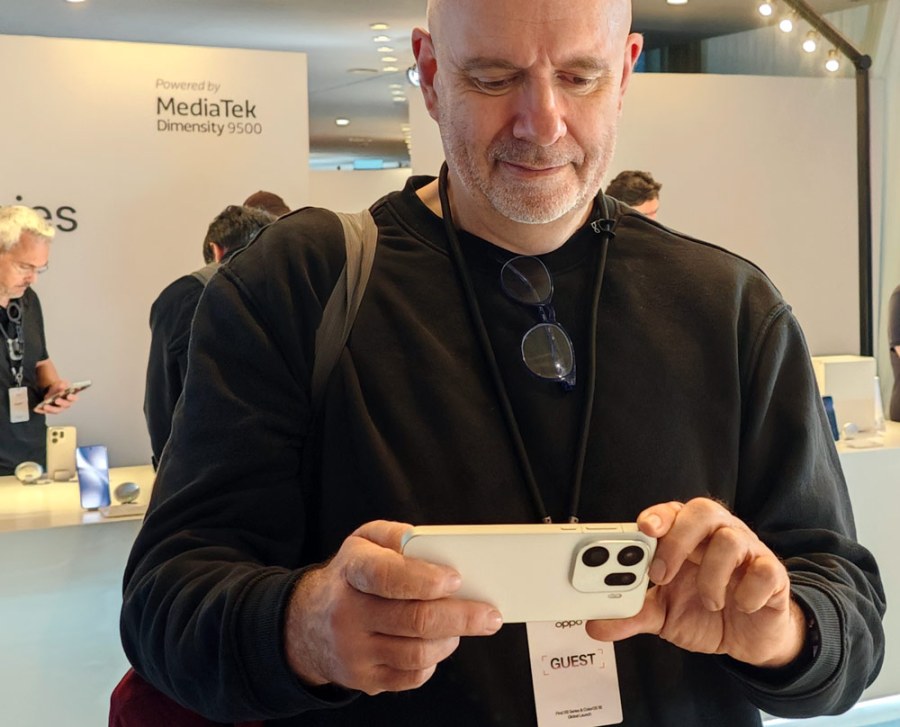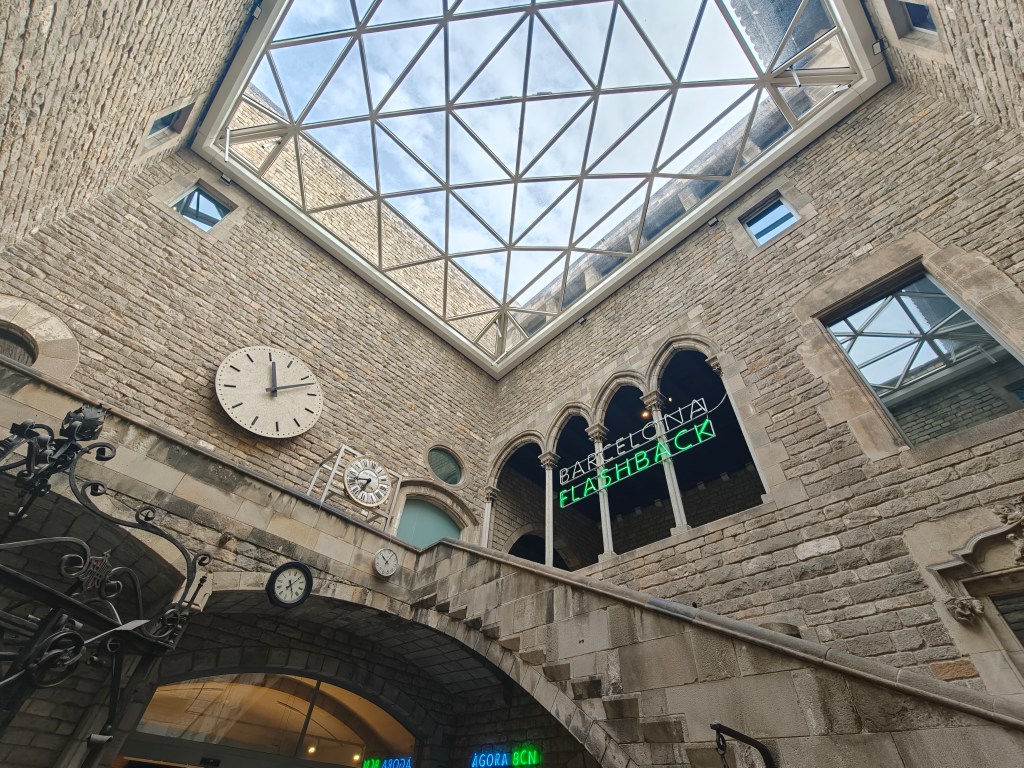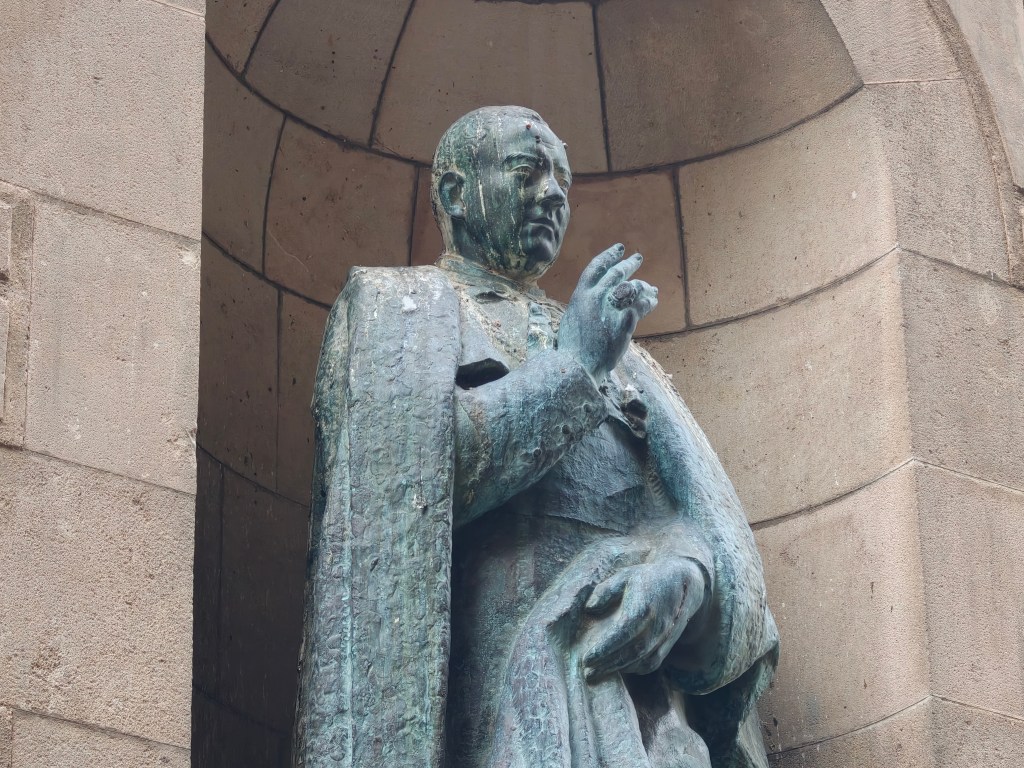On Tuesday, Android smartphone maker Oppo launched its latest flagship handset, the Find X9 Pro, along with a cheaper model, the X9.
The launch was the usual glitzy affair in the cavernous hall of one of Barcelona’s best hotels, but beyond all the hype and hoopla, I also got to spend some time shooting around the city with the Find X9 Pro (see our previous news story).
Before sharing my impressions of this important new Android phone for photographers and movie makers, here’s a reminder of the specifications.
Oppo Find X9 Pro key features
• 50MP f/1.5 main camera, 23mm with optical image stabilisation (OIS) with autofocus (AF).
• 200MP f/2.1 periscope telephoto camera, 70mm with 3x optical zoom, OIS and AF.
• 50 MP f/2.0 ultrawide camera, 15mm with AF.
• 50 MP, f/2.0 selfie camera, 21mm with AF
• 4K 30/60/120fps rear and 4K 30/60fps front video recording
• 6.7 inch (3600nit peak) OLED, 120Hz
• IP68/69 water resistant
• Dimensions: 161.3 x 76.5 x 8.3mm
• Weight: 224g
The big selling point here is the phone’s ability to capture still photos at 50MP by default on all three rear cameras (this option is labelled High Resolution). All the rear cameras are Hasselblad-calibrated too, showing that the relationship between Oppo and the big H is as strong as ever.
Other attractions include a stonkingly powerful 7,500mAh battery, rated to keep 80% of its capacity after five years, and a 6.78-inch AMOLED display with a bright and clear 2772×1272 resolution.
Fans of motion photos – where you can quickly turn a still image into a very short video – will also be glad to hear that these are now shot in 4k. Good stuff, but let’s return to the photography.
The main camera
Offering a 23mm focal length, this is based on the Sony LYT-828 sensor (1/1.28 inch sensor size), and has a bright f/1.5 aperture with OIS. The camera performs really well, with plenty of dynamic range and nicely captured details.
Auto HDR doesn’t overcook the colours and make everything look too lurid, either. The main camera captures 12MP images by default, with the option to capture 50MP images if extra resolution is needed. A very solid performance.
The ultra-wide camera and new Xpan mode
Again, thumbs up. I used this mode a lot in Barcelona and was pleased with the reasonably well-controlled wide-angle distortion. You can see in the image below how well controlled the detail is in the brickwork, with highlights also kept down in the neon signage.
I enjoyed using the XPAN feature on the previous generation of Oppo phones, though detail got lost during the upscaling process. On the new Find X9 series phones, XPAN images are taken at a resolution of 7872 x 2912 pixels, which makes them much more satisfying when zooming in or printing.
The results in decent light are great for when you need to go really wide, and you can zoom in up to 3x (70mm focal length). You get a basic choice of film-simulation filters too.
The telephoto camera in action
Oppo made a big deal of the Find X9 Pro’s 200MP telephoto sensor with 3x optical zoom at this week’s launch, and with good reason. I was really impressed with the performance, not only for capturing distance scenes, but also for portraits.
The 70mm focal length at 3x zoom is great for people shots, as can be seen from these sample shots taken during a major demonstration that seemed to bring a big part of central Barcelona to a standstill.
Tap on the 6x button in the camera app and you can access the 13.2x lossless zoom feature, which also works well in decent light and at a 12MP size limit. Go way beyond that and detail starts to go south – while the Find X9 Pro has done a reasonable job of keeping detail on the yacht below, the buildings on the distant shore look very mushy indeed.
Stay within sensible zooming limits, however, and the telephoto performance is impressive, as can be seen below.
Hasselblad Hi-Res? Hell yes!
So all good so far, but what really impressed me about the Find X9 Pro was this new mode, which again bangs home the importance of the Hasselblad relationship.
Essentially, it enables you to capture 200MP still images (yes, you read that right), Now, while this may seem overkill for a phone, it’s great for cropping in, as can be seen below.
Other reviewers have been a bit lukewarm about this high-res option, but as a keen travel photographer it’s definitely cool to have – many is the time I’ve had to shoot interesting details over the heads of other tourists, so having this much resolution on tap (pardon the pun) really expands your options.
A new teleconverter, too
Oppo also surprised the jaded hacks gathered in Barcelona by announcing an optional Hasselblad teleconverter lens. It fits to the phone’s rear via a bespoke case, and when combined with the X9 Pro’s telephoto camera, delivers a far-reaching focal length of 230mm (or 920mm lossless zoom, Oppo claims).
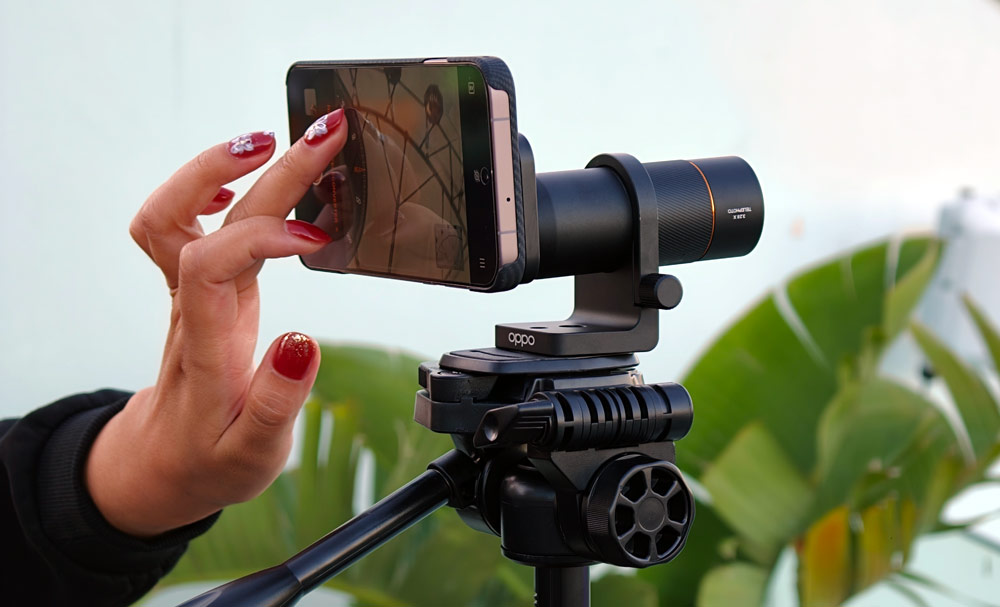
The company pitched the new teleconverter as being transformational for gig and performance photography, although it might attract undue attention from the venue’s security and other punters – it sticks out, making the phone look rather unwieldy and also very much like a conventional camera.
The price is set at 500 euros too, so it’s hardly a budget accessory. Gigs aside, the teleconverter should also be a big help with nature and architectural photography, and we hope to have a review sample soon.
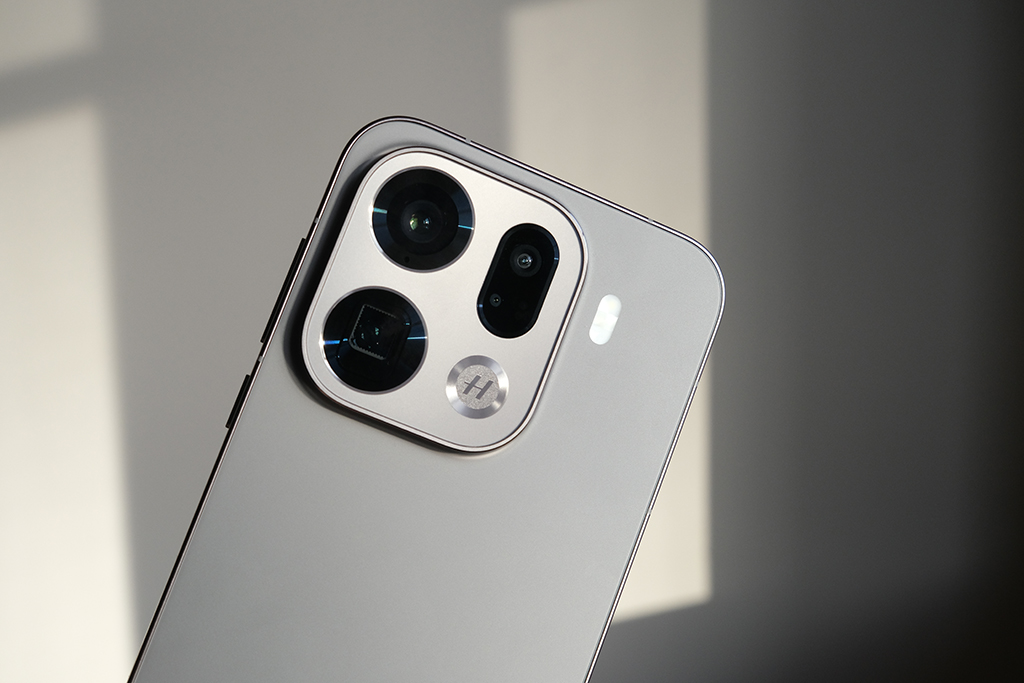
First impressions are very positive
While £1099 for the Oppo Find XPro 9 hardly makes it an impulse purchase, there is a lot to like about this new phone. All rear cameras perform well, and the Hasselblad Hi-Res mode is a genuinely useful extra.
The phone is no slouch when it comes to video either, recording 4k footage at 120fps and supporting LOG with ACES Colour Management on the main and telephoto cameras.
All this, combined with the surprisingly powerful battery, gives the Oppo Find X9 Pro a strong chance of being named one of our best Android smartphones for photography. Watch out for a full review soon!

